Posts Tagged ‘Karen National Union’ (106 found)
Central Standing Committee after 15th KNU Congress Third Emergency Meeting Statement
1. Karen National Union (KNU) Central Standing Committee (CSC) third emergency meeting was held successfully from October 23 to 29. The emergency meeting was attended by 47 out of 50 CSC members.2. The CSC emergency meeting reviewed and discussed, openly and constructively, on the current political situation of Burma, the situation of own organization, work relating to alliances, nationwide ceasefire matter and the negotiation processes […]
• • •Joint Statement of Karen Women’s Groups in Support of the Reunification of the Kawthoolei Armed Forces (KAF)
The Karen Women’s Organization (KWO), Karen Women’s Empowerment Group (KWEG) and Karen Women’s Union (KWU) welcome the announcement, on October 13th, 2014, of the Karen armed resistance groups coming together under the name of “Kawthoolei Armed Forces (KAF)”. The alliance of 4 Karen armed forces meets the long held desire of Karen people everywhere, especially of Karen women. We believe this is an opportunity for both peace building, and improved co-operation which can help reduce violence against women […]
• • •Tanitharyi Divison Villagers Call For Development Projects To Stop As Govt Grants Hundred Of Thousands of Acres To Business Interests
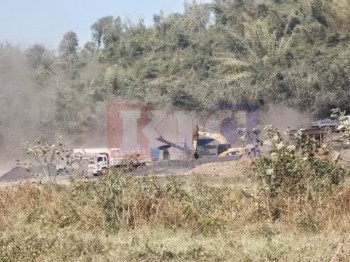 Representatives from civil society groups, religious leaders and villages in the Tanitharyi Division have sent a petition letter to both the government’s Division Chief Minister and the Karen National Union’s Megui/Tavoy District chairperson to try to get development projects stopped that villagers claim are health hazards.
Representatives from civil society groups, religious leaders and villages in the Tanitharyi Division have sent a petition letter to both the government’s Division Chief Minister and the Karen National Union’s Megui/Tavoy District chairperson to try to get development projects stopped that villagers claim are health hazards.
The petition sent on October 13, was signed by 125 representatives from 46 villages, members of civil society organizations such as Tarkapaw, Community Sustainable And Livelihood Development,Trip-Net, Dawei Development Association and religious leaders in the region […]
• •Karen Armed Forces Statement on Reunification (ကရင္အမ်ဳိးသား လက္နက္ကိုင္ ေတာ္လွန္ေရးတပ္ဖြဲ႔မ်ား ျပန္လည္ေပါင္းစည္းျခင္း သေဘာတူညီခ်က္)
1. In accordance with the wishes of the Karen people, we, the forces of KNLA, KNDO, DKBA and KNU/KNLA-PC have unanimously reunified as the (Kawthoolei Armed Forces – KAF) […]
• • •New Burma Army offensive in Karen State linked to Salween dam plans
Salween Watch is gravely concerned at the recent escalation of fighting and displacement in Karen state, Burma/Myanmar, which is linked to plans by the Burma Army to clear the way for the planned Hut Gyi Dam on the Salween […]
• • •Replacing Impunity with Accountability
On September 21st, the body of Saw Ta Noh, a private in the Karen National Liberation Army’s (KNLA) 6th Brigade, was found in the Moei River, near Myawaddy, after having been arrested on September 16th by soldiers from Border Guard Force (BGF) Battalion #1022.Captain Hla Min […]
• • •Karen Civil Society Rallies Around Japan’s Harmful Plans for Eastern Burma
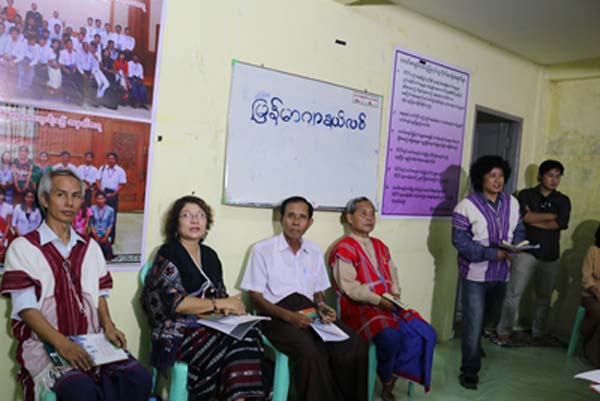 Japan’s lofty development plans for eastern Burma were very publicly rejected by the Karen Peace Support Network (KPSN) at a press conference in Rangoon, citing lack of consultation with communities and the potential for such plans to fuel conflict. Based on a blueprint for extensive development projects produced by the Japanese International Cooperation Agency (JICA), the overseas development arm of the Japanese government, 28 Karen civil society organizations that form the KPSN, released a report to outline their concerns and recommendations. JICA’s blueprint, in which its main goal is to support the return of refugees and internally displaced persons (IDPs), contains four main components; economic corridors, free trade zones and industrial estates, industrial clusters, and urban development. The Japanese government has been working closely with both the Union level and State level Burmese Government in the development of this plan.
Japan’s lofty development plans for eastern Burma were very publicly rejected by the Karen Peace Support Network (KPSN) at a press conference in Rangoon, citing lack of consultation with communities and the potential for such plans to fuel conflict. Based on a blueprint for extensive development projects produced by the Japanese International Cooperation Agency (JICA), the overseas development arm of the Japanese government, 28 Karen civil society organizations that form the KPSN, released a report to outline their concerns and recommendations. JICA’s blueprint, in which its main goal is to support the return of refugees and internally displaced persons (IDPs), contains four main components; economic corridors, free trade zones and industrial estates, industrial clusters, and urban development. The Japanese government has been working closely with both the Union level and State level Burmese Government in the development of this plan.
For Karen civil society, however, there are many concerns, as outlined in the report released on 9 September. Although the blueprint aims to “promote peace through development,” JICA has not conducted a conflict analysis on what is an extremely complicated and fragile context. In fact the plans could serve to exacerbate conflict by facilitating land confiscation, one of the loci of tension in the ceasefire process. Also, improving transport and road access to areas traditionally held by ethnic armed groups such as the Karen National Union (KNU), allows easy access for Burma Army soldiers to the heart of Karen areas. We must not forget the abusive nature of the Burma Army that has been terrorizing civilians for decades and continues to do so, despite a ceasefire in place. Will exposing more communities, who are already vulnerable to abuses, to the unreformed Burma Army really aid peace […]
• • •Critique of Japan International Cooperation Agency’s Blueprint for Development in Southeastern Burma/Myanmar
The Japan International Cooperation Agency (JICA) has recently issued a blueprint that proposes industrial development in Southeast Burma/Myanmar, purportedly to aid in the return and settlement of refugees and Internally Displaced Persons (IDPs) in Karen and Mon States. However, the Karen Peace Support Network (KPSN), a network of nearly 30 ethnic Karen organizations, cautions JICA that its blueprint for infrastructure development such as roads and industrial estates in the war-torn southeast is premature and flawed, potentially exacerbating conflict in the region.
The KPSN (formerly KCBPSN) is the largest network of Karen civil society organizations in Burma/Myanmar. These organizations have been providing support for vulnerable people in this conflict-torn region for decades, striving to empower local communities, build transparent and accountable institutions, and help create a sustainable peace in Burma/Myanmar. KPSN and its member organizations are important stakeholders which must be included in any development planning process in the Karen areas of the southeast […]
• • •Unity Must Prevail
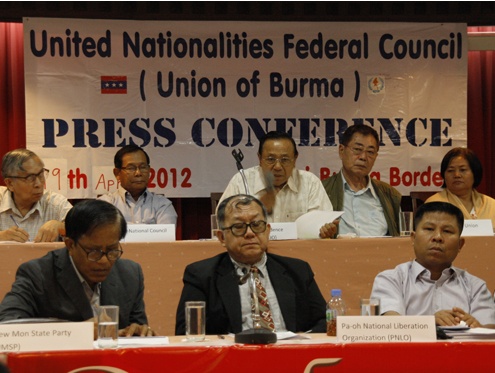 After its organizational conference held on a Thailand-Burma border area, disagreements between the United Nationalities Federal Council (UNFC) and the Karen National Union (KNU) has led to the KNU suspending its’ membership of the UNFC, a setback for the peace process. While this strikes a blow into the government engineered narrative that the peace process is making substantial progress, it is particularly worrying for the ethnic communities that have been suffering from this conflict for decades.
After its organizational conference held on a Thailand-Burma border area, disagreements between the United Nationalities Federal Council (UNFC) and the Karen National Union (KNU) has led to the KNU suspending its’ membership of the UNFC, a setback for the peace process. While this strikes a blow into the government engineered narrative that the peace process is making substantial progress, it is particularly worrying for the ethnic communities that have been suffering from this conflict for decades.
Ostensibly, disagreements over organizational structure have caused this rift, although there are also disagreements within the KNU leadership itself over its position in the UNFC, leading to fears of a split within what has traditionally been the most prominent ethnic armed group. Previous Burma regimes have used divide and rule tactics to weaken armed resistance and to sabotage ethnic unity and it is imperative that this does not happen now. As ethnic leaders squabble over leadership structures, surely much to the delight of the leaders of the Burma Army, it is the most vulnerable populations who feel the pressures, while the government manages to convince elements of the international community that a peace settlement is just around the corner. It is crucial that whatever reason for the KNU’s withdrawal from the UNFC, they must put the ethnic communities at the forefront of their decision making […]
• • •Navigating Paths to Justice in Myanmar’s Transition
Since President Thein Sein and his government took office in 2011, Myanmar’s transition has unfolded at a pace that has surprised many and earned the acclaim of western governments, financial institutions, and private-sector investment analysts.1 The Burmese population of approximately 60 million has endured more than a half-century of military dictatorship, armed conflict, economic dysfunction, and political repression.2 A meaningful transformation into a peaceful society that enjoys economic development and functions democratically now seems plausible, though it is far from guaranteed. Ultimately, the blanket immunity afforded by the 2008 Constitution shields the acts attributable to prior regimes from any form of accountability.3 Whether the reform process will evolve to include measures that address the massive and systematic injustices of the past remains less certain.
• • •
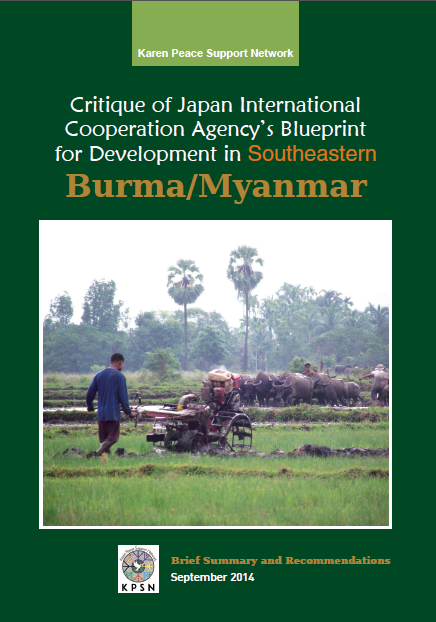
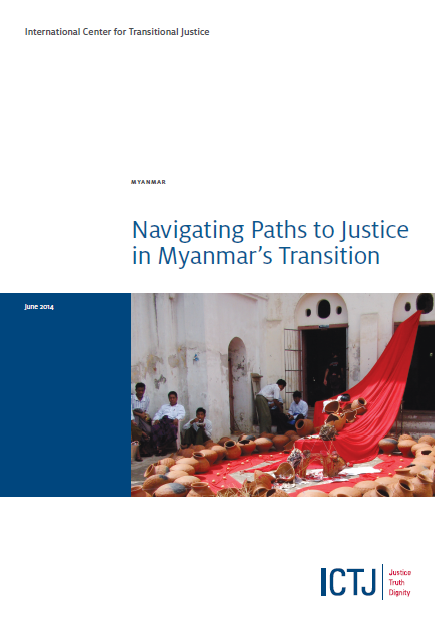








 All posts
All posts